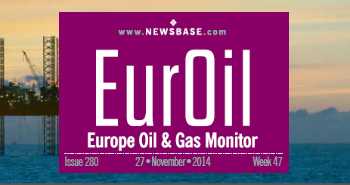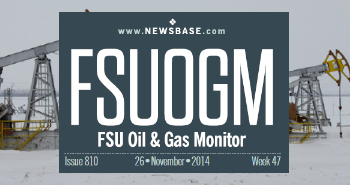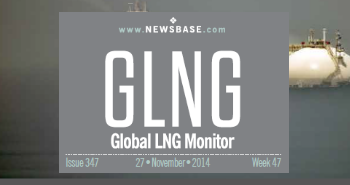OPINION: Europe eager to avoid swapping dependence on Russian gas for overreliance on US LNG amid Trump volatility
Europe is caught in a bind: unwilling to commit to gas in the long term, but still heavily reliant on it in the short term; eager to reduce Russian influence, but wary of handing leverage to Washington.
WHAT: The EU is reluctant to take further action to cut its Russian gas supply.
WHY: The bloc continues to struggle with high gas prices, and is wary of relying too much on US LNG amid Trump’s radical policy changes.
WHAT NEXT: Europe’s gas situation remains precarious, with the bloc in need of more affordable supply in the short term, but unwilling to commit to supply in the long term.
Three years ago, Europe pledged to eliminate Russian gas imports by 2027. Much of that gas has already vanished from the system, but with prices still elevated and geopolitical uncertainties on the rise – particularly under the Trump administration – European leaders are unlikely to take bold steps to eliminate the remainder. There is growing unease about replacing dependence on Russia with overreliance on the US.
European gas prices remain stubbornly high – alarmingly so when compared to the pre-Ukraine war norm. These elevated costs have dealt a heavy blow to European industry over the past three years, with many companies shuttering factories and relocating operations to regions with cheaper and more stable energy, such as the US and China.
The incoming European Commission has vowed to reverse this industrial decline. But how can Europe reindustrialise when energy – especially gas, a critical source of heat, power and feedstock – remains prohibitively expensive?
The situation worsened this year as Russian pipeline gas transiting Ukraine came to a halt. Simultaneously, low wind speeds curtailed renewable output, increasing pressure on gas to stabilise the grid. Although this winter was cold, it wasn’t exceptionally so – yet it still strained energy systems. Meanwhile, summer forward prices remain high, partly due to the Commission’s unwillingness to ease gas storage targets – a prudent measure at the height of the energy crisis that is now fuelling bullish sentiment in the months ahead.
So, what should Brussels do? Press ahead with its commitment to fully eliminate Russian gas, potentially tightening the market further? Russian supplies have already fallen to around a quarter of pre-war volume – roughly 32bn cubic metres of pipeline gas and 24 bcm of LNG – but that still accounts for an estimated 15-20% of the EU’s now-reduced gas demand. Some member states, many of which stopped buying Russian LNG years ago, are pushing for an embargo on Russian LNG. Yet the proposal is stalled. On the pipeline side, Hungary and Slovakia remain key recipients – and both flatly refuse to relinquish that supply.
Complicating matters further is the potential return of Russian gas under a future peace deal in Ukraine. But recent developments suggest the Trump administration has realised that ending a war is more complex than closing a business deal.
EU leaders may also hesitate to cut Russian gas completely owing to the geopolitical strings that may now be attached to US LNG. Less than a decade after launching its first LNG exports, the US has become Europe’s second-largest gas supplier, trailing only Norway. But unlike Norway, which has never politicised its gas trade, Washington under Trump has made energy a bargaining chip. Earlier this year, the administration threatened Europe with tariffs if the latter didn’t buy more US LNG. No serious discussion happened on the subject, and Trump followed through with those tariffs anyway on April 2.
Russia has long used gas as a geopolitical weapon: loyalty brought cheap supplies; defiance triggered disruptions and bigger bills. Could Trump do the same with US LNG? As part of his “Unleashing American Energy” agenda, Trump has been open about using US LNG as a tool of influence. Long-term investments in US LNG projects could potentially buy tariff relief. Refusal, however, might invite further economic consequences.
Yet long-term gas contracts remain politically toxic in Europe. The Commission, regulators and many national governments discourage them, arguing that gas demand will fall significantly in coming decades under the EU’s climate goals. Whether that demand curve materialises is far from certain.
At the same time, the EU is considering emulating Japan’s LNG procurement strategy. Japan has long ensured energy security by taking equity stakes in LNG projects across the world – from Australia and Russia to the US – and underpinning them with long-term contracts. But replicating that model in Europe seems unlikely to succeed. Japan’s investments took decades to mature, while Europe’s energy crisis is immediate. Moreover, the Japanese model is underpinned by long-term certainty on gas demand – something Europe does not have.
One senior gas industry executive told NewsBase he remained deeply sceptical: “If it made sense for Europe to invest in LNG supply overseas, why haven’t private companies done it already? The truth is, nobody knows what Europe’s long-term gas demand will look like. If it collapses, those investments could be stranded.”
In short, Europe is caught in a bind: unwilling to commit to gas in the long term, but still heavily reliant on it in the short term; eager to reduce Russian influence, but wary of handing leverage to Washington. Until this tension is resolved, Europe’s energy strategy is in the doldrums, as is its potential industrial revival.





Follow us online